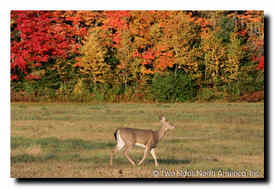Each year since 1960, the third week in October has been proclaimed National Forest Products Week in the U.S. It is a time to recognize the essential role that forests play in the country’s history, culture, environment and economy. Our forests are a source of clean air and water, are home to a diversity of fish and wildlife, a place to enjoy, provide us with many products made from wood and are a source of employment for people who work in and manage the forests.
 From houses to paper to packaging to fuel to furniture to railways, wood products are an irreplaceable part of our daily lives. But those are just the traditional uses of forest products! What about all the surprising everyday items that contain products from wood? Wood cellulose, released when wood is processed into pulp, is used to make ping pong balls, sports helmets, nail polish and synthetic fibres, which are made into clothes and towels – just to name a few.
From houses to paper to packaging to fuel to furniture to railways, wood products are an irreplaceable part of our daily lives. But those are just the traditional uses of forest products! What about all the surprising everyday items that contain products from wood? Wood cellulose, released when wood is processed into pulp, is used to make ping pong balls, sports helmets, nail polish and synthetic fibres, which are made into clothes and towels – just to name a few.
The forest products industry directly employed over 900,000 people in 2017 in the U.S. and provided 2.4 million supporting jobs in 45 states across the country. The industry generates 4% of the total U.S. manufacturing GDP and wood products are a globally-traded commodity that supports U.S. economic growth. The U.S. is one of the world's most diverse exporters of sustainable forest products.
One of the great qualities of forest products made in North America, is that they come from a renewable and sustainable resource: trees! And not only are wood products durable and energy efficient; healthy, growing forests are an important part of our culture as well as playing a key role in absorbing carbon dioxide, releasing oxygen and storing carbon over time. For more information on the renewable energy use and carbon footprint of making paper see this Two Sides Fact Sheet.
Our forest products, including pulp and paper, are being produced from sustainable forestry in the U. S. where forest area increased from over 302 million ha in 1990 to almost 309 million ha in 2010 and about 310 million ha in 2015, a total increase of almost 8 million ha (UNFAO, 2016).
So, look around you this week and count up the many ways that forest products are important in your life.
